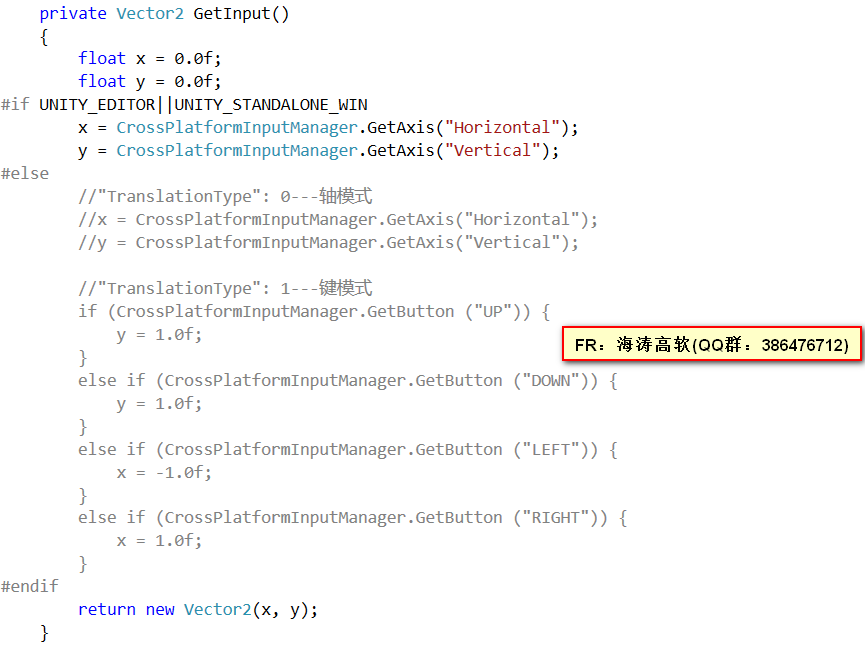暴风魔镜与手柄相关的事件
本文共 461 字,大约阅读时间需要 1 分钟。

除了上面四个事件外,还有几个:
CrossPlatformInputManager.GetButtonUp(“MENU”) CrossPlatformInputManager.GetButton(“CENTER”) CrossPlatformInputManager.GetButtonUp(“OK”) CrossPlatformInputManager.GetButtonUp(“Submit”) CrossPlatformInputManager.GetButtonUp(“DOWN”) CrossPlatformInputManager.GetButton(“Jump”) CrossPlatformInputManager.GetButtonUp(“C”) CrossPlatformInputManager.GetButtonUp(“Cancel”)FR:徐海涛(Hunk Xu) QQ群:386476712
你可能感兴趣的文章
NoClassDefFoundError: org/springframework/boot/context/properties/ConfigurationBeanFactoryMetadata
查看>>
node exporter完整版
查看>>
Node JS: < 一> 初识Node JS
查看>>
Node JS: < 二> Node JS例子解析
查看>>
Node Sass does not yet support your current environment: Windows 64-bit with Unsupported runtime(72)
查看>>
Node 裁切图片的方法
查看>>
Node+Express连接mysql实现增删改查
查看>>
node, nvm, npm,pnpm,以前简单的前端环境为什么越来越复杂
查看>>
Node-RED中Button按钮组件和TextInput文字输入组件的使用
查看>>
vue3+Ts 项目打包时报错 ‘reactive‘is declared but its value is never read.及解决方法
查看>>
Node-RED中Switch开关和Dropdown选择组件的使用
查看>>
Node-RED中使用html节点爬取HTML网页资料之爬取Node-RED的最新版本
查看>>
Node-RED中使用JSON数据建立web网站
查看>>
Node-RED中使用json节点解析JSON数据
查看>>
Node-RED中使用node-random节点来实现随机数在折线图中显示
查看>>
Node-RED中使用node-red-browser-utils节点实现选择Windows操作系统中的文件并实现图片预览
查看>>
Node-RED中使用node-red-contrib-image-output节点实现图片预览
查看>>
Node-RED中使用node-red-node-ui-iframe节点实现内嵌iframe访问其他网站的效果
查看>>
Node-RED中使用Notification元件显示警告讯息框(温度过高提示)
查看>>
Node-RED中使用range范围节点实现从一个范围对应至另一个范围
查看>>